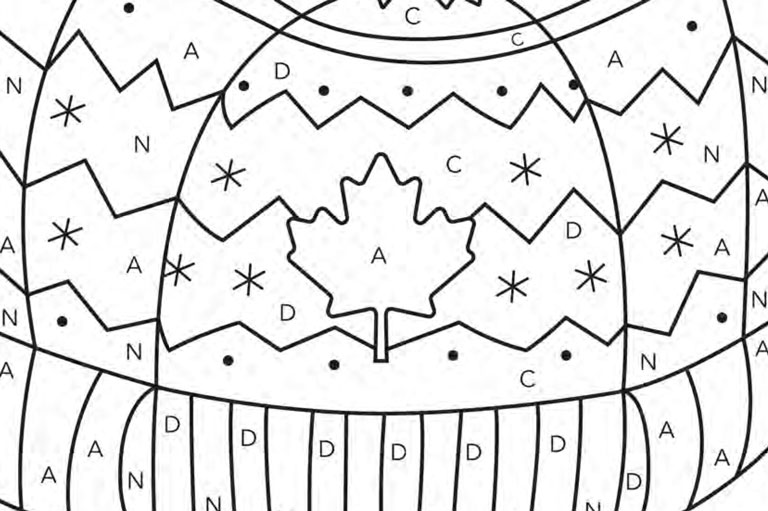Learning Basic Cree Conversation
Grade Levels: 3/4, 5/6, 7/8, 9/10, 11/12
Subject Area: Indigenous Languages – Introductory Cree
This lesson is inspired by the article “Speaking of Survival” in the December 2019 issue of Kayak: Canada’s History Magazine for Kids.
Lesson Overview
This lesson will introduce students to the basic sounds of the Cree language (Y dialect). Students will compare and contrast the Cree letters of the alphabet to the letters of the English alphabet.
Time Required
1 hour
Historical Thinking Concepts
- Establish historical significance
- Use primary source evidence
- Identify continuity and change
Learning Outcomes
Student will:
- Identify the long and short vowel sounds and consonants in the English language
- List the long and short vowel sounds and consonants in the Cree language
- Distinguish how Cree sounds of letters are similar/different from those of the English sounds
- Explain why it is important to ensure that Indigenous language preservation is important
Background Information
Educators should explain how, historically, Indigenous languages were transmitted from one generation to the next in the oral tradition. In some languages, there was no formal written structure as there is in English (where individual sounds can be represented by letter symbols).
The extended family is an important part of Cree culture and historically, grandparents played an important role in teaching language to children and for sharing traditional stories and teachings with them.
Educators should also explain how Canada’s residential school system affected the retention and transmission of Indigenous languages for many tribes of Indigenous people across the country. This has resulted in a decline in the number of fluent Indigenous in various tribes today. Some Indigenous languages are in real danger of becoming extinct.
Students should have an understanding of how Venn diagrams can be used as a way of comparing and contrasting data.
The Lesson Activity
Activating: How will students be prepared for learning?
As students enter the room to begin the lesson play a Cree round dance song (available on Apple music or on YouTube) and let students listen. Once the song is finished, explain to students that there are actual words sung in the drum song. Each drum song conveys a meaning and message. We can appreciate the song in a deeper way if we can understand the words.
Discuss the importance of communicating with one another through language in order to prepare students for learning an Indigenous language. If we cannot
communicate effectively with others, then our ability to enter into relationships with them is limited. If we want to learn more about a person (or cultural group) then one of the ways we can accomplish this is by learning to acquire a new language.
Explain to students how many Indigenous languages in Canada face a real threat to becoming endangered or extinct as the number of fluent speakers steadily decreases through time.
Acquiring: What strategies facilitate learning for groups and individuals?
Have students write out the letters of the English alphabet separating the vowels and the consonants. Review the sounds of each letter including the long and short sounds of vowels. Introduce the eight consonants in Cree which correspond with some of the English consonants (p, t, k, s, h, m, n and c). The letter “c” in Cree produces a “ts” sound as in “cats”
Have students note which letters from the English alphabet are missing from the Cree alphabet (including the fact that there is no short “e” vowel in Cree).
Indicate that long vowels in Cree are shown with a macron symbol ( ^ ) over the letter. Note that the vowel “e” is always considered long in Cree, so it often does not have the macron symbol over it.
Using these letters to represent words is known as Roman Orthography, as opposed to learning how to represent Cree words by the use of syllabics (symbols for phonemes).
Some effective strategies to facilitate learning in the classroom include:
- The use of interactive whiteboards (like Smart boards) to display tables with letter symbols, use of Venn diagrams to help students make connections to their learning. Interactive whiteboards can also be a good way to bring technology into the classroom as students can access resource people who are fluent in an Indigenous language (to utilize video conferencing) to show the correct pronunciation of sounds and words.
- Cooperative learning is an effective strategy to allow students of mixed ability to work with a partner to reinforce concepts taught, and to practice vocabulary exercises with someone.
- Differentiated instruction is a necessary strategy to ensure that learning is scaffolded for all learners. This may include defining terms (vowels, consonants, phonemes) and ensuring that students are familiar with the phonemes (sound units).
Applying: How will students demonstrate their understanding?
- Students will create a Venn diagram to show which letters are common to both alphabets, and which letters are distinctly separate.
- Students will practice the sounds for each of the Cree consonants and vowels, using English words as guides.
- Students will participate in a class discussion to indicate their reasons why it is important to protect Indigenous languages.
Materials/Resources
- Whiteboard or chart paper
- Markers
- Interactive whiteboard
- Table Representing Letters of the Cree Alphabet
References
- “Indigenous Languages”, Canadian Geographic. This booklet provides foundational knowledge for learning about Indigenous languages.
- Wade Davis, “Why Indigenous Languages Matter”, Canadian Geographic. This may be shown to students prior to the Cree language lesson.
- “Endangered Languages”, Canadian Geographic. This indicates numerous Indigenous languages that are endangered in Canada.
- “Speaking of Survival” in the December 2019 issue of Kayak: Canada’s History Magazine for Kids.
Assessment
Determine whether students were successfully able to explain why language preservation is important (generate responses through classroom discussion and write responses on the whiteboard or chart paper).
Determine if students were successful at noting which letter sounds were common to both languages or specific to one language system (note the placement of letter symbols in the Venn diagram).
Themes associated with this article
Advertisement







